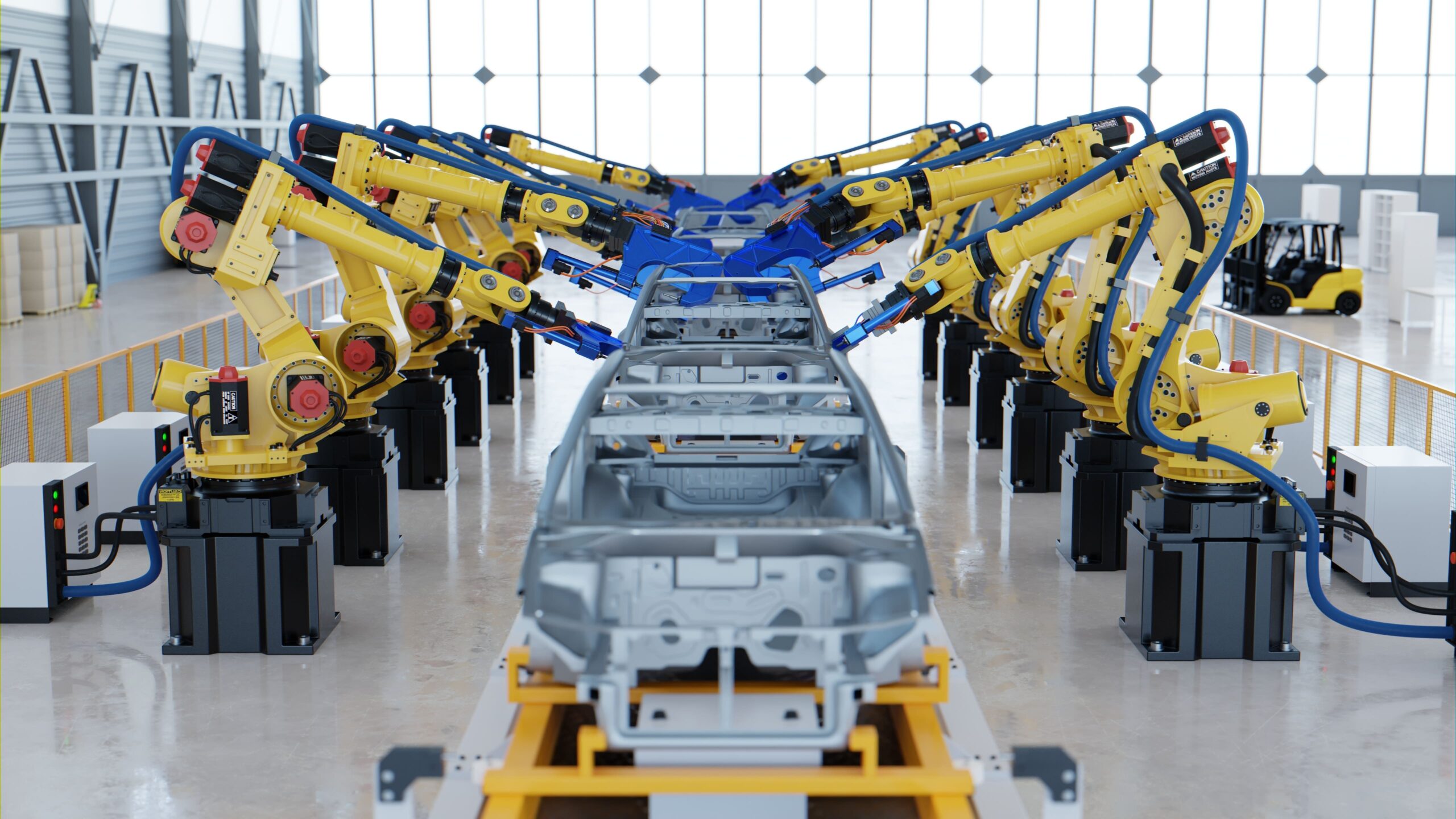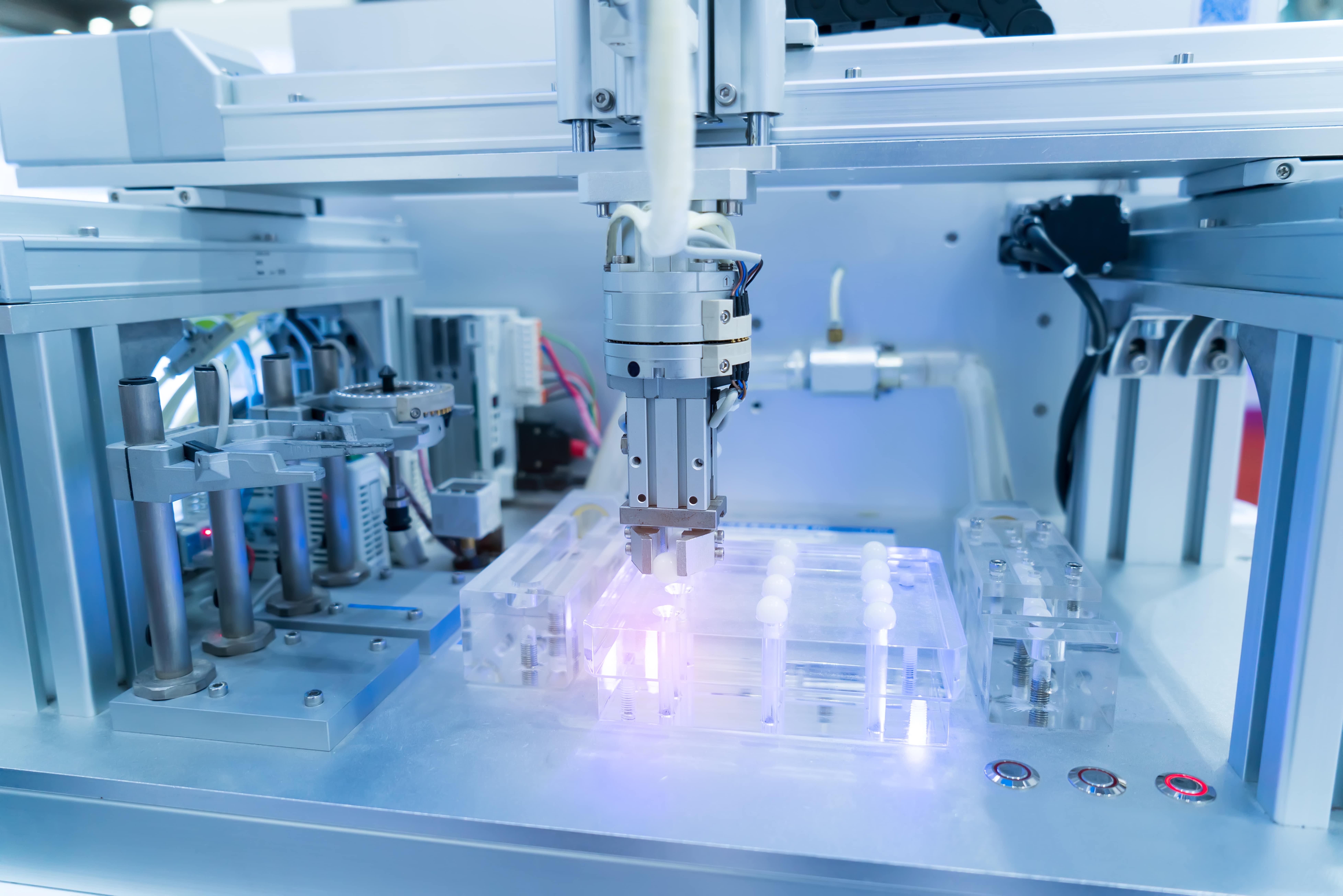
The integration of artificial intelligence (AI) in the automotive industry marks a revolutionary shift in how vehicles are designed, manufactured, and operated. As we race into Q2, AI’s influence stretches across the diverse automotive sector to enhance efficiency, safety, and user experience.
This article explores how artificial intelligence drives innovation in the automotive industry, illustrating the critical trends and actionable strategies for auto execs to stay ahead in this fast-evolving landscape.
AI in the Automotive: Market Overview
The automotive industry is undergoing a seismic shift due to AI’s integration into core operations and customer-facing applications. AI’s adoption in the automotive sector is a fundamental component driving the next wave of industry innovation. This transformation is fueled by the need for greater efficiency, advanced safety features, and personalized user experiences.
As vehicles become smarter and expectations around automotive technology continue to rise, the industry is tapping into AI’s potential to meet and exceed these demands. This transformation is evident in several key trends that are reshaping the landscape from enhanced design and manufacturing processes to developments in autonomous vehicles.
The global automotive AI market is expanding rapidly, driven by increasing demand for autonomous vehicles and the growing emphasis on enhancing the driver’s experience.
The Impact of AI in Automotive 2024

From enhancing vehicle design and manufacturing processes to developing autonomous vehicles and personalized in-car experiences, AI is driving innovation at a rapid pace. Here’s a closer look at the trends making headlines in 2024:
Trend 1: Enhanced Design and Manufacturing
AI-powered Design Tools
AI is revolutionizing the way cars are designed and manufactured. Automakers are leveraging AI-powered design tools to refine aesthetics and functionality, significantly speeding up the design process while exploring a broader range of possibilities.
A notable example is Daimler, the parent company of Mercedes-Benz, which employs generative AI models to innovate car designs more efficiently. In this case, AI both refines the aesthetic aspects and optimizes the functional design of car components, ensuring that innovation in the automotive industry is both visually appealing and performance-oriented.
Predictive Maintenance and Quality Control
AI is also transforming the manufacturing side of the automotive industry. Predictive maintenance, powered by AI algorithms, can analyze data from factory floor sensors to anticipate equipment failures and prevent costly downtimes.
General Motors, in collaboration with IBM’s Watson, has implemented such systems in their plants, achieving a 50% reduction in unplanned downtime. This technology both improves operational efficiency and enhances the quality control process, reducing the incidence of manufacturing defects and ensuring higher product standards.
[Source: IBM website]
Trend 2: Advanced Driver-Assistance Systems (ADAS)
Automation in Safety Features
ADAS technologies, such as automated emergency braking, lane departure warnings, and adaptive cruise control, are transforming driving experiences by improving safety and convenience. Tesla’s Autopilot system is a prime example of this trend, combining various sensors and cameras to navigate roads autonomously, although it still requires driver oversight. These systems are increasingly incorporating machine learning to enhance their decision-making capabilities in real-time, providing a safer and more reliable driving experience.
[Source: Tesla Autopilot]
Automated Parking
AI-driven solutions are simplifying tasks like parking. Bosch is at the forefront with its AI-powered systems that can maneuver vehicles into tight parking spaces without human intervention, showcasing a leap towards full automation in everyday driving tasks. This technology is beneficial because it reduces driver stress and significantly lowers the risk of parking-related accidents.
[Source: Bosch website]
Trend 3: Personalized In-Car Experience
Voice-Controlled Assistants
Integration of AI-powered virtual assistants such as Amazon’s Alexa and Apple’s Siri into vehicle systems enhances the driving experience by allowing voice-controlled operation of navigation, climate control, and entertainment systems. Ford’s partnership with Amazon to embed Alexa into its vehicles is a testament to this trend’s growth. These assistants are becoming more intuitive and capable of handling complex commands, thereby increasing accessibility and ease of use for drivers.
[Source: TechCrunch]
Biometric Facial Recognition
AI enhances safety through features like biometric recognition and driver monitoring systems. These technologies adjust vehicle settings based on the driver’s profile and monitor signs of drowsiness or distraction, contributing significantly to road safety. They are becoming increasingly sophisticated, capable of recognizing subtle physiological and behavioral changes, thereby offering a more responsive and personalized user experience.
[Source: McKinsey & Company report, “Driving towards the future of automotive operations”].
Trend 4: Development of Autonomous Vehicles (AVs)
Self-Driving Cars
The pursuit of fully autonomous vehicles (AVs) remains a major focus, with significant investments from both tech giants and traditional automakers. Companies like Waymo and Ford are pioneering the development of fully autonomous electric vehicles. Waymo’s self-driving taxis, which began operations in Phoenix, utilize sophisticated AI algorithms for safe navigation in complex environments. These vehicles are equipped with cutting-edge perception technologies, allowing them to understand and react to dynamic road conditions more effectively.
[Source: Waymo]
The Role of ADAS in AV Development
The progression and refinement of ADAS features are setting the stage for the future of autonomous driving, with technologies such as lane centering and adaptive cruise control laying the groundwork for fully autonomous vehicles. The iterative improvements in these systems enhance current vehicle capabilities while also providing essential data to refine AI models for future AV deployments.
[Source: McKinsey & Company report, “Driving towards the future of automotive operations”].
How Auto Execs Can Get Ahead of These Trends
Trend 1: Enhanced Design and Manufacturing
Development
AI’s role in automotive manufacturing is expanding beyond traditional automation. The technology is now integral in enhancing design and streamlining production lines. AI algorithms optimize material selection and logistics, contributing to a more efficient supply chain. Moreover, AI is employed in real-time to ensure quality control, identifying defects and inconsistencies that escape human scrutiny.
Action for Executives
For automotive executives, the strategic integration of AI into manufacturing processes is imperative. Investing in AI capabilities, either by developing in-house expertise or forming partnerships with specialized AI firms, can lead to significant improvements in production efficiency and product quality. This proactive approach in adopting AI technologies ensures that companies remain competitive in a rapidly evolving industry.
Trend 2: Advanced Driver-Assistance Systems (ADAS)
Development
The sophistication of Advanced Driver-Assistance Systems (ADAS) continues to grow, with new features like automated lane changing and advanced highway merging becoming a reality. These systems use AI to enhance vehicle safety and driving efficiency, providing drivers with unparalleled support on the road. Moreover, AI’s capability to anticipate and react to unpredictable road conditions represents a breakthrough in automotive safety technology.
Action for Executives
To capitalize on this trend, executives should focus on developing and enhancing sensor technology, which is fundamental to the effectiveness of ADAS. Investing in AI research is crucial for advancing these technologies. By prioritizing the development of robust, reliable ADAS, companies can improve road safety and position themselves as leaders in automotive innovation.
Trend 3: Personalized In-Car Experience
Development
AI is transforming the in-car experience by making it more personalized and intuitive. AI-powered systems can learn from drivers’ behaviors and preferences to offer a tailored driving experience. Features such as biometric recognition are being explored for enhancing vehicle security and personalizing comfort settings, further demonstrating AI’s potential in creating a unique user experience for every driver.
Action for Executives
Automotive leaders must consider the implications of handling and protecting the vast amounts of data generated by in-car AI systems. Investing in secure, ethical data management systems is essential. Such infrastructure will not only protect user privacy but also ensure that the benefits of personalized experiences do not come at the cost of consumer trust or safety.
Trend 4: Development of Autonomous Vehicles (AVs)
Development
The prospect of fully autonomous vehicles is becoming more tangible, particularly in controlled environments like highways or smart cities. However, significant challenges such as regulatory approval and public acceptance still need to be addressed. AI plays a critical role in navigating these challenges by improving the safety and reliability of AVs.
Action for Executives
Executives must engage with policymakers to advocate for clear, practical regulatory frameworks that support the integration of AVs into public roads safely and efficiently. Collaborating on a roadmap for AV adoption, focusing on safety and transparency in decision-making processes, will be key to gaining public trust and fostering widespread acceptance of autonomous vehicles.
Staying Ahead of Innovations in the Automotive Industry With Entrapeer

AI is undeniably revolutionizing the automotive industry, driving advances in everything from manufacturing to driver assistance and vehicle operation. For automotive executives, staying ahead means embracing these technologies, foreseeing their implications, and acting decisively. By investing in AI, automotive leaders can enhance operational efficiencies, improve product offerings, and ultimately, redefine the driving experience to steer the industry toward a more innovative and sustainable future.
At entrapeer, we understand that the biggest obstacle to innovation is not just identifying new technologies but understanding their practical applications and potential benefits. Our platform is designed to bridge this gap by providing AI-driven insights that help align innovative solutions with real-world needs. Our mission is to connect the dots between technology and urban design, paving the way for a future where cities and mobility systems are smart, seamless, and centered around the human experience. We not only provide the tools needed to navigate these changes but also ensure that every automotive player, from manufacturers to executives, has access to the best possible partnerships and technological advancements.
Through market research, trend analysis, and startup scouting, entrapeer equips industry leaders with the tools to drive meaningful change. Whether it’s exploring the feasibility of autonomous vehicles, leveraging AI in car manufacturing, or implementing vehicle sharing effectively, our platform ensures that every innovation not only addresses current challenges but also anticipates future demands. As the industry continues to evolve, entrapeer remains a pivotal player in driving the future of innovation in the automotive industry.
Ready to revolutionize your corporate innovation journey?
Create an account with entrapeer today to explore all the features of our enterprise innovation platform or contact us to learn more about how we can help you find the right startup partners and propel your innovation forward. Kick off your next POC in minutes and stay ahead of the curve in the fast-paced world of corporate innovation.
FAQs
Rapid advancements in technology, especially in artificial intelligence, IoT, and electrification, along with increasing environmental regulations and changing consumer preferences, are major drivers of innovation in the automotive industry.
Consumer demands for greater connectivity, improved safety features, and more sustainable transportation options are pushing automakers to innovate and integrate more advanced technologies into their vehicles.
Key challenges include high development costs, the complexity of implementing new technologies, and the need for compliance with stringent safety and environmental regulations.
Autonomous vehicles are expected to reduce traffic congestion and accidents, leading to more efficient urban planning and potentially transforming the layout and infrastructure of cities.
Startups often bring innovative solutions and agility to the automotive industry, driving traditional companies to adapt and collaborate, thus accelerating technological advancements.
Technologies like blockchain for secure data sharing, augmented reality for enhanced driving experiences, and advanced materials for better vehicle efficiency and sustainability are poised to further transform the automotive industry.

